Discover 11 hidden attractions, cool sights, and unusual things to do in Waco (United States). Don't miss out on these must-see attractions: Cameron Park Zoo, Extraco Events Center, and Texas Sports Hall of Fame. Also, be sure to include Texas Ranger Hall of Fame and Museum in your itinerary.
Below, you can find the list of the most amazing places you should visit in Waco (Texas).
Table of Contents
Cameron Park Zoo
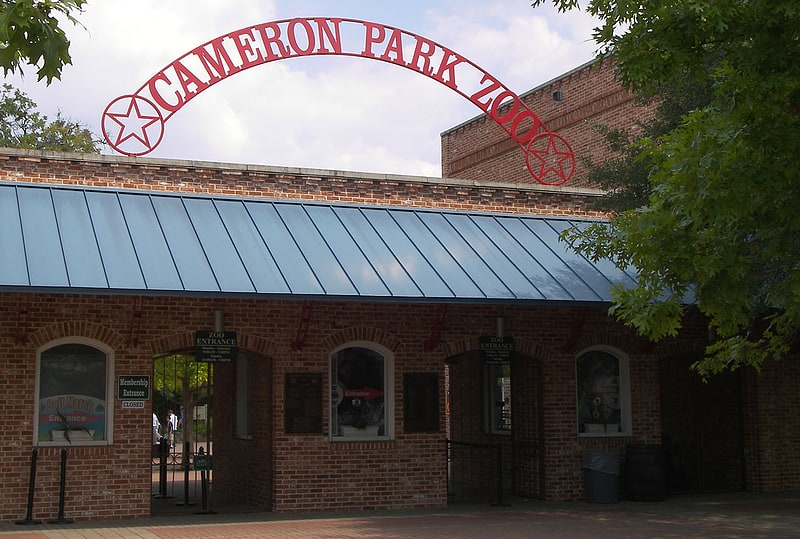
Zoo in Waco, Texas. Cameron Park Zoo is a 52-acre natural habitat zoo located within Cameron Park in the city of Waco, Texas, United States, next to the Brazos River. Established in July 1993, Cameron Park Zoo has lush native vegetation that surrounds splashing waterfalls, a picturesque lake, and ponds. And in the midst of all this beauty, visitors see that the wild ones not only survive in their natural habitat, but they also flourish. The zoo features a diverse collection that includes over 1731 animals, representing 300 species from around the world.
The Cameron Park Zoo is accredited by the Association of Zoos and Aquariums (AZA) and is a member of the World Association of Zoos and Aquariums (WAZA).[1]
Address: 1701 N 4th St, 76707-2463 Waco
Extraco Events Center

Coliseum in Waco, Texas. The Heart O' Texas Fair Complex, now known as the Extraco Events Center, is located in Waco, Texas. It was once the prime basketball facility for Baylor University. The H.O.T Coliseum was constructed after McLennan County voters authorized a bond issue of $1.2 million in the early 1950s. Despite public criticism that might be directed toward the board and individual members, it was the board's unanimous decision to build portions of the entire plant that the available money would permit. The last of five contracts was signed on January 9, 1952, and construction of the Coliseum began soon afterward. The Coliseum, livestock barn, ticket booths and several small buildings were constructed, paving was done and fencing enclosed the grounds. In the spring of 1953, the Coliseum was completed, and on April 11, the formal opening was held. The Coliseum remained home to Bears basketball, and Waco's largest concert venue, until Ferrell Center was built in 1988.
All facilities and grounds of the Fair Complex underwent renovations and/or reconstruction throughout the years of 2000 to 2005. The Complex now covers 50 acres (200,000 m2) of land containing modernized facilities, 700 stalls, 250 RV hook-ups and parking areas able to accommodate over 3800 vehicles. Its facilities consist of the Heart O’ Texas Coliseum, Back Porch Club, Show Pavilion, General Exhibits Building, Creative Arts Building and the recently constructed Stall Barn. The Events Center coliseum seats 6,000 for rodeos and up to 9,000 for concerts.
In August 2010, officials announced that Extraco Banks signed a long-term naming rights deal, officially changing the name of the grounds to the Extraco Events Center.
The Heart O' Texas Fair & Rodeo, held for a week in October, is its largest attraction of the year, hosting a PRCA rodeo event and accompanying fair, which attract hundreds of thousands.
The Extraco Events Center also hosts yearly events such as the Ringling Brothers and Barnum and Bailey circus, Monster Trucks, major concert acts, and has also hosted WWE Monday Night Raw on several occasions.[2]
Address: 4601 Bosque Blvd, 76710-4604 Waco
Texas Sports Hall of Fame

Hall of fame. The Texas Sports Hall of Fame recognizes athletes, coaches, and administrators who have made "lasting fame and honor to Texas sports". It was established in 1951 by the Texas Sports Writers Association. Once it made its first induction in 1951, Texas became the first U.S. state to have a sports hall of fame.[3]
Address: 1108 S University Parks Dr, 76706-1223 Waco
Texas Ranger Hall of Fame and Museum

Museum in Waco, Texas. The Texas Ranger Hall of Fame and Museum in Waco, Texas, is the state-designated official historical center of the famed Texas Rangers law enforcement agency. It consists of the Homer Garrison Jr. museum gallery, the Texas Ranger Hall of Fame, the Texas Ranger Research Center and the Headquarters of Texas Rangers Company "F". The City of Waco serves as the appointed trustee on behalf of the Texas Department of Public Safety and the Texas Legislature.[4]
Address: 100 Texas Ranger Trl, 76706-1209 Waco
McLane Stadium
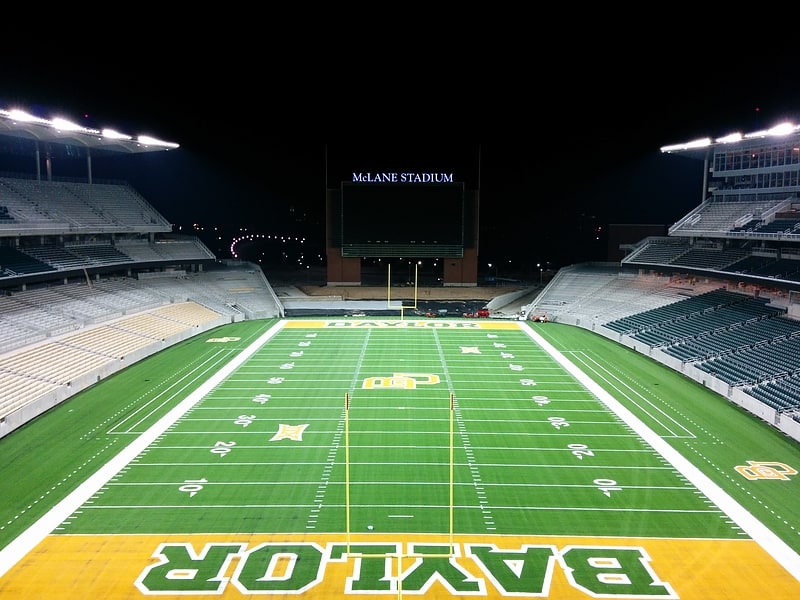
Stadium. McLane Stadium is an American football stadium in Waco, Texas owned and operated by Baylor University. Originally named Baylor Stadium, the facility's name was changed to McLane Stadium in December 2013 to honor Baylor alumnus and business magnate Drayton McLane, Jr. who provided the lead gift in the fundraising campaign for the stadium construction. Baylor's first game at McLane was played August 31, 2014, with the Bears defeating SMU 45–0. The stadium has a capacity of 45,140 spectators and was designed to be expandable to a capacity of 55,000 as future needs require. McLane Stadium replaced Floyd Casey Stadium as the home field for the Baylor Bears football program.[5]
Address: 1001 S Martin Luther King Jr Blvd, 76704-2926 Waco
Ferrell Center
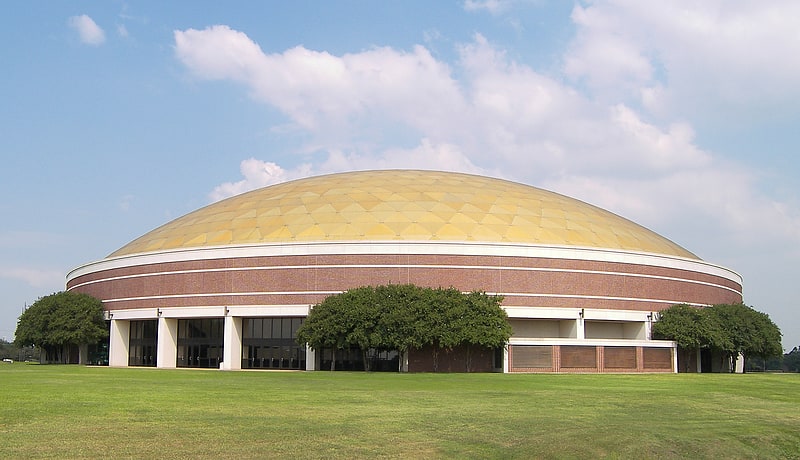
Arena in Waco, Texas. The Paul J. Meyer Arena, which is part of the Ferrell Center, is an arena in Waco, Texas. Built in 1988 and located adjacent to the Brazos River, it is home to the Baylor University Bears basketball and volleyball teams. It is named for Charles R. Ferrell, a Baylor student and legacy who died in 1967, and whose family's estate was a major benefactor of the arena. The building replaced the Heart O' Texas Coliseum as the school's primary indoor athletic facility.[6]
Address: 1900 S University Parks Dr, 76706-1654 Waco
Waco Suspension Bridge
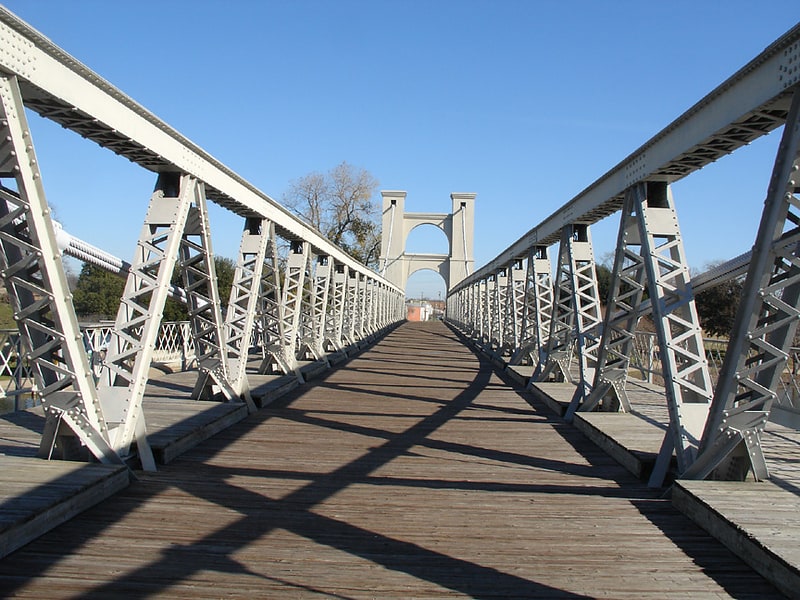
Suspension bridge in Waco, Texas. The Waco Suspension Bridge crosses the Brazos River in Waco, Texas. It is a single-span suspension bridge, with a main span of 475 ft. Opened on November 20, 1869, it contains nearly 3 million bricks. It is located north of downtown Waco, connecting Indian Spring Park with Doris D. Miller Park. Every year on Independence Day, the bridge serves as a place where thousands of locals gather to watch fireworks. Indian Spring Park marks the location of the origin of the town of Waco, where the Huaco Indians had settled on the bank of the river, at the location of an cold spring.
Before 1869, crossing the Brazos River was a time-consuming and sometimes dangerous ordeal. The only way to cross the river was by ferry, and due to the location of Waco on the growing Chisholm Trail, local businessmen knew that a bridge was needed to support commerce. For this reason, members of Waco Masonic Lodge #92 proposed the creation of such a bridge and they assigned a committee which would form the Waco Bridge Company, responsible for funding and building the project. A charter was received from the state in 1866.
Col. John T. Flint, an Austin lawyer and banker, who had moved to Waco after the war and established a firm named Flint & Chamberlain, went personally to New York to handle the contract for building a bridge.
In October 1868, the engineer he hired, Thomas M. Griffith, began to supervise the construction using cables from the Roebling company of Trenton, New Jersey. The logistical and engineering difficulties he encountered were abnormal because of the remote location.
Due to lack of machine shops in the Waco area, getting the materials to the building site was a journey in itself. The nearest railroad was 100 miles (160 km) away, and the closest town with artisans with the skills needed was Galveston, over 212 miles (341 km) from the build site. Supplies were loaded onto a steamer in Galveston, and ferried to Bryan. From there, they were loaded onto wagons pulled by oxen. The pothole-filled dirt road from Bryan to Waco was bad, even by 19th-century Texas standards.
The twin double towers that anchored the span were considered to be a marvel of engineering at the time, containing nearly 3 million bricks, which were produced locally.
The bridge collected its first toll on January 1, 1870. Its 475-foot (145 m) span made it the first major suspension bridge in Texas.
The bridge was wide enough for stagecoaches to pass each other, or for cattle to cross one side of the bridge, and humans to cross the other side. Being the only bridge to cross the Brazos at the time, and the primary river crossing for the north-south travel through Texas (including cattle drives on the Chisholm Trail), the cost of building the bridge, which was estimated to be $141,000, was quickly paid back. Tolls were 5 cents per head of cattle that crossed, along with a charge for pedestrian traffic.
In 1889, the bridge was sold to McLennan County for $75,000, which removed all tolls. In 1913-1914, major reconstruction occurred on the bridge, replacing the older steel with higher gauge, and trusses were added to accommodate the span to carry heavier weights. This doubled as a new pedestrian walkway.
By 1971, the bridge had seen over 100 years of traffic. What started out as a cattle bridge had become a vehicular bridge, and the state historical committee decided that it was time to be retired, with larger and arguably safer bridges being built since the inception of the Waco Suspension Bridge. The bridge, by all accounts, helped to transform Waco from a small frontier town to a major commercial center. Today, the bridge is open to foot traffic only.
Beginning in October 2020, the bridge was closed as part of a $12.4 million rehabilitation project that involved replacing the suspension cables that had been installed in 1914, reinforcing the anchors, and replacing the decking. Temporary piers were placed in the river to support the deck while the cables were removed.
The bridge was listed on the National Register of Historic Places in 1970, and was designated as a Texas Historic Civil Engineering Landmark by the American Society of Civil Engineers in 1971.[7]
Address: Doris Miller Park, 76701 Waco
Mayborn Museum Complex
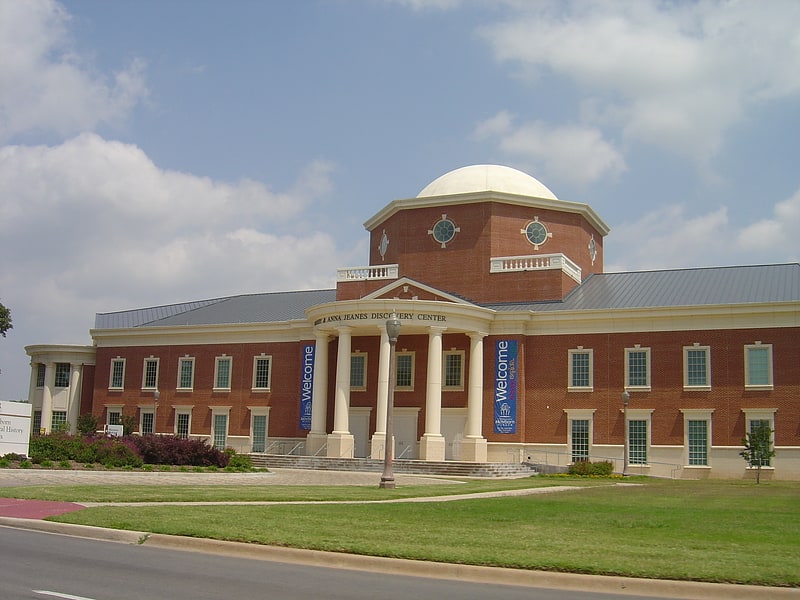
Museum in Waco, Texas. The Mayborn Museum Complex is a 142,000-square-foot facility that opened in May 2004 at Baylor University in Waco, Texas. It features a natural history museum focusing on Central Texas with walk-in dioramas including one on the Waco Mammoth Site, and exploration stations for geology, paleontology, archeology, and natural history. Sixteen themed discovery rooms encourage hands-on learning for all ages. The complex also includes a 13-acre historic village, a 5,000 sq ft traveling exhibit gallery, a theater, a museum store, and a snack area.[8]
Address: 1300 S University Parks Dr, 76706-1716 Waco
Cameron Park
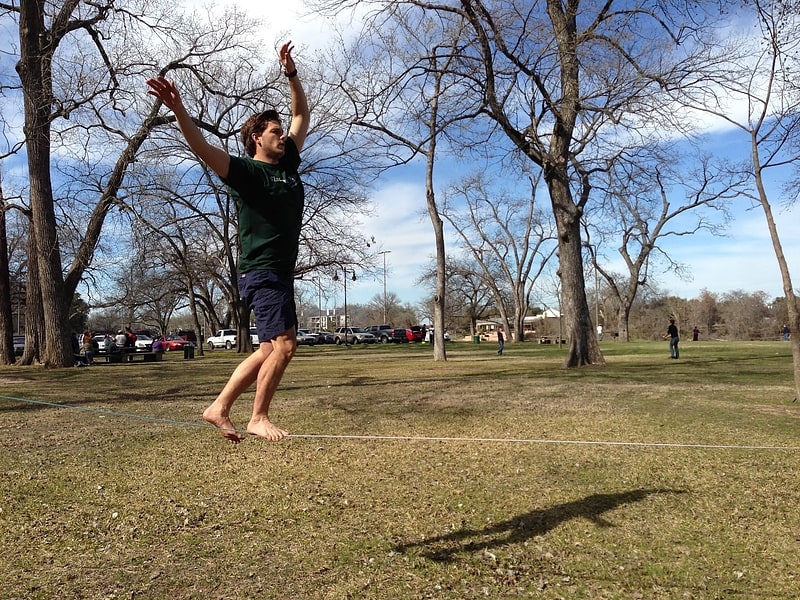
City park in Waco, Texas. Cameron Park is a 416-acre urban park located in Waco, Texas. The park was dedicated on May 27, 1910, and named in memory of Waco philanthropist and lumber baron William Cameron. The park also contains Waco's 52-acre zoo, the Cameron Park Zoo.[9]
Address: Emmons Cliff Drive, 76708 Waco
Armstrong Browning Library

University library in Waco, Texas. The Armstrong Browning Library is located on the campus of Baylor University in Waco, Texas, USA and is the home of the largest collections of English poets Robert Browning and Elizabeth Barrett Browning. Additionally it is thought to house the largest collection of secular stained glass in the world.[10]
Address: 710 Speight Avenue, 76798 Waco
Dr Pepper Museum

Museum, Specialty museum, Historical place, History museum
Address: 300 S 5th St, 76701-2115 Waco